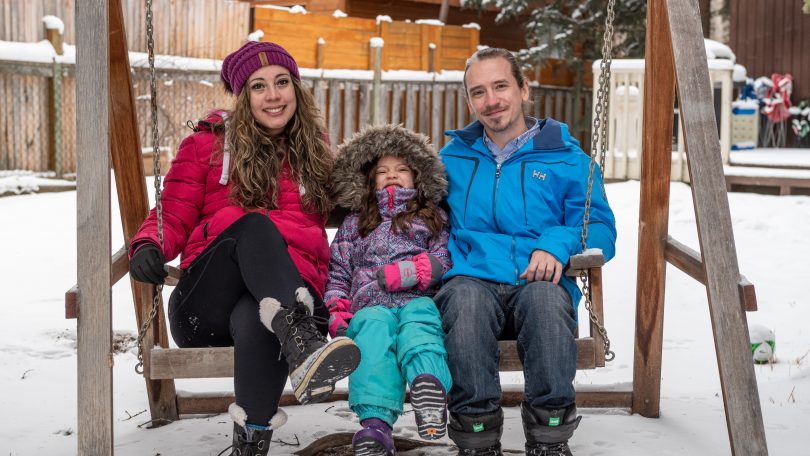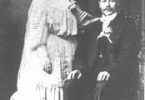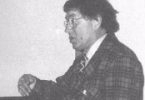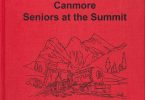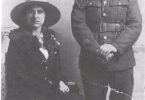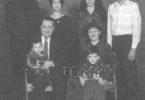How long have you been in the Bow Valley?
“I have been living in the Canmore for 6 years and 7 months. I arrived on May 15, 2014 when I left my city lawyer life in Santiago de Chile and I moved here with a working holiday visa. At the Calgary Airport, when we were waiting for the bus to Canmore and Banff, somebody took us to the wrong taxi and to the wrong hotel in Calgary. I was the only one in the group of 5 Chileans who could talk in English. So, I explained we were not the employees they were waiting for. They agreed with me and drove us back to the airport. That was such a strange and funny beginning in Canada! but somehow, I managed it calmly and thanks to the universe, we got there on time for the bus to Canmore. Since then, Canmore changed my life significantly. I found the love of my life here, we married and now we are raising our 5-year-old daughter.”
What does an average day or week look like for you right now?
“I always like to enjoy nature daily. That makes me happy, my daughter loves it too. If it is not that cold, we go for walks or to the park.
If it is too cold, we just play inside the house with the curtains wide open so we can look outside and see the trees.
I like to meditate at least once a day looking at the forest behind our house. I like to eat healthy food, watch movies with my daughter, teach her things, play family board games. Also, I love cooking nice, tasty food.“
How are you getting along with your close relationships?
“2020 helped me a lot to get me closer to myself, my daughter, my husband, and my new hobbies: writing and taking pictures of sunrises and sunsets in Canmore. I have had amazing conversations with some relatives and good friends through WhatsApp, Instagram and Facebook. We send voice messages, videos and pictures to each other. COVID helped me to realize who are and who are not my caring friends and relatives, and with who I share interests and values in difficult situations. In some way, I like this process.”
Has this impacted your financial situation?
“Yes, because I got laid off in March. I was working as a cook in a restaurant in Canmore. Anyways, Canada is a good country, and I worked a lot of hours before COVID started, so I have been collecting benefits since April, saving some money for us and to pay taxes later.”
What’s been the hardest part of this for you?
“Finding a dentist for my daughter. She needed dentist during the lockdown, and it took us close to 3 months to get her teeth fixed. After looking for a dentist specialized in kids in Canmore, visiting a dentist in Banff, we finally got her dental surgery done in Calgary. It was a stressful period because she was in pain and she could not eat as much as she wanted it. Thankfully, now she is fine and eats without issues.”
Has there been anything that has scared you, or you have been afraid of?
“Yes, if a member of my family or friends gets too sick from COVID. So, I make sure we get good sleep, healthy food, vitamins, and good jokes to keep our immunity systems strong.”
Is there something that turned out to be a secret blessing or, something positive, from this experience?
“Yes, it is. I connected with my ancestors, European and Indigenous. Living in the mountains, helped me to re-discover my maternal great great grandmother who was one of the last Machis, Mapuche Shamans, in the South of Chile.
Since then, I have been reading a lot about Mapuches and their beliefs, mostly documents written in English from American and Swedish Universities.
Surprisingly Frozen 2, one of my daughter’s gifts for Christmas, I discovered the similarities between Mapuches and Sami people who are an indigenous group located in northern Norway, Sweden, Finland and Russia. Both groups have and respect shamans, and they believe that animals, plants, rivers, lakes, icebergs, glaciers, human made objects and buildings, and even words have their own spirits. They also have similar symbols for the elements of nature and clothing designs. Anyways, Sami style is more colourful than Mapuches. Back in Chile, I studied law and also social sciences, so I really get excited with discoveries like this one, specially because my husband is part Norwegian, Swedish and Russian, so we both have relatives who believed in the magic of nature.”
What do you think you will remember most from this time?
“My family, my books, my meditation, nature. I love talking to my daughter! She has speech delay and finally this year she started talking a lot. That situation makes me emotional and incredibly happy.
Also, I will remember the Shoe Project at artsPlace because I loved it! it was very meaningful for my self-image, self-esteem, and the self-confidence to close the circle of immigration from Chile to Canada. This year has been rich spiritually connecting with myself, my feelings, my past and my own thoughts. The Shoe Project helped me a lot in that sense especially through writing meditation.”
If you could speak directly to somebody in the past or the future, what would you say to them?
For my ancestors I would say “thank you all, for the connection that gives me power and strength daily”.
For people in the future, I would say “never stop dreaming, trusting in yourself, your talents, and your own path in life. Trust in the universe and that you come here for a reason, even if you do not see that reason yet. And remember, the problem is not a pure objective fact, but your interpretation about it”.
Anything else?
“I would say to everyone “do not let the sadness and stress stop you from seeing the beauty and love around you, specially in difficult situations”.”
The Stories of Resilience project offers deeply personal insights into the lives of Bow Valley residents during the COVID-19 pandemic. They each share their unique challenges, fears, hopes, and lessons learnt during this unique time in history. This project was brought to life by a collaboration of local organizations: Bow Valley Immigration Partnership (BVIP), artsPlace Canmore, Kristy Wolfe Photography, Canmore Museum. With special thanks to Community Connections in the Bow Valley.
Explore More Stories of Resilience
